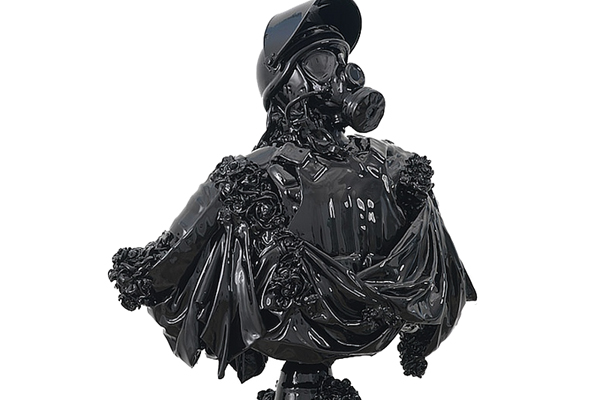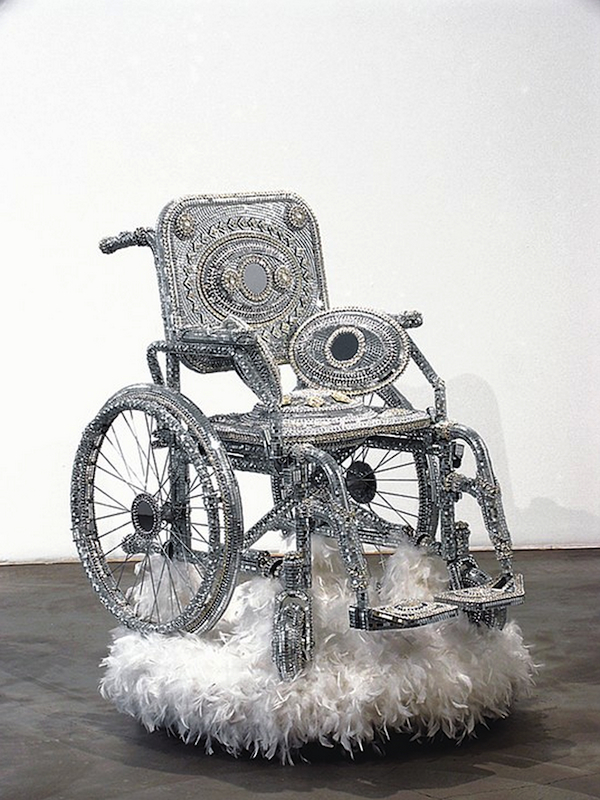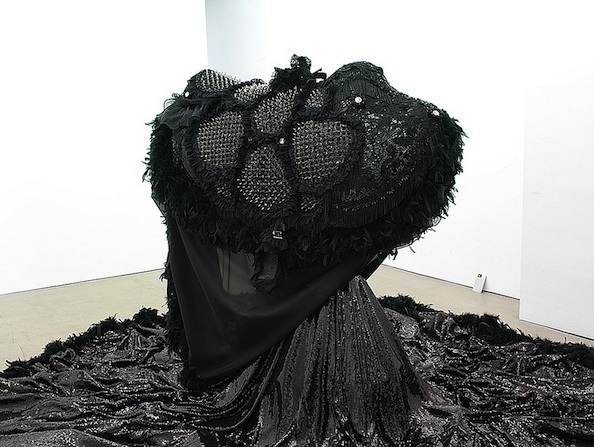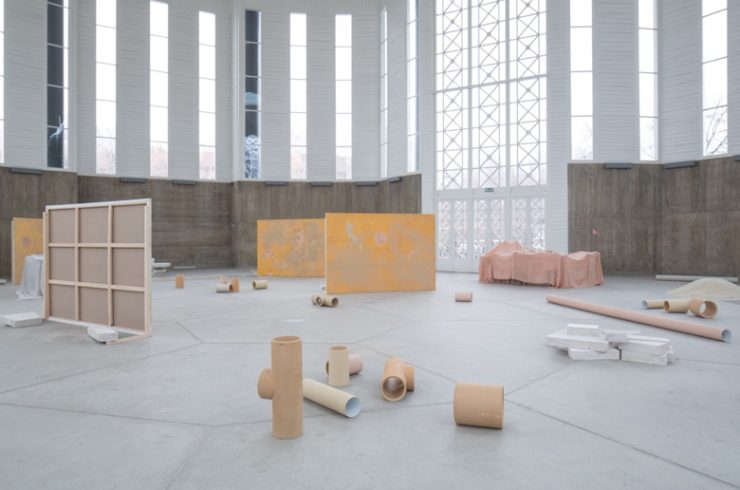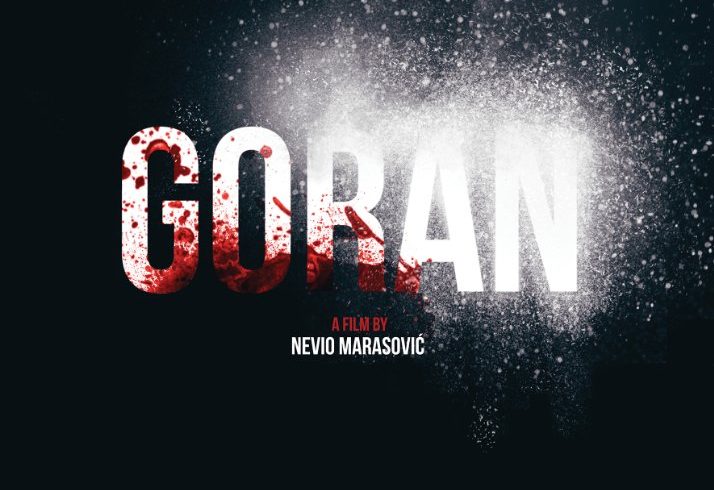Art
Kristian Kožul: Transformation through Ornamentation
Sculptor and installation artist Kristian Kožul, who currently lives and works in Zagreb, is known for creating heavily embellished work that seeks to create tension and play with preconceptions. He encrusted a wheelchair, for example, with glistening rhinestones and perched it atop a fluffy cloud of white feathers. Suddenly, the wheelchair – typically associated with injury, invalidity, and decreased mobility – becomes a glittering throne, a floating chariot.
Another sculpture, a highchair, is covered in black leather, studs, and chains. A bust of a policeman in a gas mask, looking ready to battle street rioters, is cast in gleaming black resin (feature image). In all of his work, Kožul seeks to transform common objects, creating conflict and questioning social constructs, though usually with a hint of irony and often a touch of humor.
Here, Kožul tells us about the process of creating such intricate work.
What is the role of material in your work?
The material itself is crucial in creating the tension within the work itself; it is specifically chosen to correspond to the found/prefabricated object it will be used on/with as a form of dermis. Usually juxtaposing the inherent iconographic values of the object and the applied material in a contradictory manner, thus creating a specific narrative for every individual work.
How do you choose which medium to work with?
It really boils down to the nature of the work itself. I am more concerned with the storytelling than with the medium I will use to tell it.
Can you tell us a bit about your sculpture Bull? What was your initial concept? Why a mechanical bull?
The Bull was a work I created in New York, and at that time I was fascinated with the almost ritualistic nature of the American tradition of bull riding. It was probably the inherent machismo of the activity that attracted me to it in the first place, the whole “taming of the beast” demonstration of fearlessness that has no practical application to it.
Over time, it evolved into a very popular pastime and the foundation of the American West. With the whole mechanization of the ritual it also [carried] a very strong sexual undercurrent.
So the idea was to create this magnificent deadly machine that would also emphasize its own sexual/fetishistic nature. Getting ahold of the mechanical bull was actually done by Goff and Rosenthal, the gallery I worked with at the time, and I was spared the negotiations of getting it into my studio. For this I am still grateful… Of course I should have found someone to attach the million or so spikes, beads and rhinestones as well, instead of devoting myself to the hermit like existence of a professional fetishistic decorator.
Do you embellish all of your work yourself? Why not have someone else do it?
I embellish the work myself. Usually the patterns gradually evolve during the process, so it is an essential part of the creative process. When I need to make an edition, I let someone else do it.
Must you learn specific skills, like sewing or embroidery, as you go along?
Not really. It boils down to using a lot of industrial glue. Fumes help as well!
Your figurative sculptures of prisoners, policemen, and businessmen feel highly politicized, yet the figures are anonymous. Do they represent any event or situation in particular?
It depends on the work: they refer to specific roles, but not events in particular. It is mostly the anonymity that imbues them with a certain perception of power or the lack of it, or even helplessness, as is the case with Gitmo prisoners wearing sensory deprivation gear. [Precisely] the lack of perceptible individuality is what allows for the cliché acceptance of dehumanized social roles played by the depicted characters.
From whom or what do you draw inspiration?
I think the most accurate way to describe that particular process would be to claim the role of a voyeur, which doesn’t mean that I watch https://www.tubev.sex/?hl=ko, I’m a social voyeur meaning I like to watch any type of interaction between people in a social setting.
Can you tell us a bit about any projects you’re currently working on?
Let’s keep this a secret…
Video Document of Kristian Kozul’s solo show at Goff+Rosenthal New York, 2007
Interview by Elaine Ritchel (@elaineritchel)
Image source: Kristian Kožul
